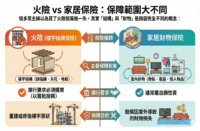
Are you planning on buying an apartment in Hong Kong? Whether you’re looking at first-hand (new) or second-hand (resale) properties, this comprehensive guide will walk you through everything you need to know about the apartment buying process.
The Apartment Buying Process in Hong Kong
Whether buying a new or resale apartment, understanding the process is crucial for a successful purchase. Local real estate experts recommend following these essential steps when buying an apartment in Hong Kong.
Buying First-hand Apartments
New apartment developments in Hong Kong attract buyers with attractive payment plans. The process typically begins with reviewing detailed sales materials and visiting show flats. Developers provide comprehensive information about unit layouts, specifications, and payment options.
Payment flexibility remains a key advantage when buying new apartments. Developers often offer various payment schemes, including immediate payment with greater discounts or construction-phase payment plans with extended timelines.
New Apartment Payment Schedules in Hong Kong
| Timeline | Immediate Payment Plan | Construction Payment Plan |
|---|---|---|
| Within 3 Days |
|
|
| Within 60 Days |
|
|
| Approximately 3 Months Before Move-in | – |
|
| Within 14 Days of Move-in Notice |
|
|
Second-Hand Apartment Purchases
The resale apartment market provides immediate availability and established locations. Buyers can inspect actual living conditions and negotiate prices based on current market values. This option particularly appeals to those seeking quick move-in dates and proven neighborhood environments.
Second-Hand Property Purchase Timeline in Hong Kong
| Timeline | Purchase Process |
|---|---|
| Upon Deciding to Purchase |
|
| Within 14 Days |
|
| Completion Period (Usually 2-3 Months) | Buyer’s lawyer reviews property documents and handles title check |
| Within 2 Months Before Completion | Bank processes mortgage application |
| Before Completion Date |
|
| Completion Date |
|
Guide to Buying Second-Hand Property in Hong Kong
1. Property Search
The first step is finding a property. With advanced internet development, besides visiting agencies in person, you can search properties anytime via online platforms or mobile apps. After finding an interesting property, you can arrange viewings through an agent and sign an “Estate Agency Agreement” (property viewing agreement). The agreement will specify viewing dates, property location, and commission terms. After signing, you must process the purchase through the same agency if you decide to buy any property you’ve viewed, or you may face commission claims.
2. Property Valuation
After finding a suitable property, the next step is obtaining preliminary bank valuations to determine mortgage rates and repayment terms.
Valuation factors include:
- Transaction records
- Building age
- Property quality
- Type
- Floor level
- Orientation
- Surrounding environment
The valuation directly affects the bank’s mortgage loan amount. It’s recommended to check preliminary valuations before signing the provisional agreement. The most efficient approach is through mortgage brokers who can compare valuations from different banks. After receiving bank valuations, buyers can renegotiate with sellers through the property agent until reaching an agreement.
3. Provisional Agreement
Once both parties confirm the transaction price, completion date, and basic terms, they sign a Provisional Sale and Purchase Agreement. The buyer needs to pay an initial deposit, typically 3-5% of the property price.
4. Mortgage Application
Buyers can formally apply for mortgages using the provisional agreement copy. It’s recommended to apply to 3-4 banks, as too many applications may affect personal credit. Compare mortgage plans and offers before submitting applications.
5. Appointing a Solicitor
A solicitor must handle the formal sale and purchase agreement. The seller’s solicitor prepares the draft agreement and sends it to the buyer’s solicitor for review. Both parties’ solicitors will reach an agreement on the formal contract terms.
6. Signing Formal Agreement
Both parties typically sign the formal Sale and Purchase Agreement within 14 days after the provisional agreement. The buyer pays stamp duty and further deposit (5-7%) through their solicitor. The total deposit (initial plus further) usually equals 10% of the property price. The buyer’s solicitor arranges stamp duty payment and Land Registry registration. Note that failure to sign the formal agreement on time may result in deposit forfeiture.
7. Mortgage Agreement
The buyer must sign the mortgage agreement on or before the completion date. The completion date is agreed by both parties, usually within one month after signing the formal agreement. The bank will transfer the loan amount to the seller after the buyer signs the mortgage agreement.
8. Final Inspection and Completion
Buyers should conduct a final property inspection on or before the completion date to ensure vacant possession (property is empty and seller has no outstanding fees). After both parties’ solicitors verify the documentation, both parties sign relevant documents, arrange stamp duty payment and Land Registry registration. The seller hands over the keys after the buyer pays the remaining balance.
After completion, if the buyer has a mortgage, the bank will keep the property deed until the loan is fully repaid.
New Property Purchase Process in Hong Kong
Sales Brochure Review
The first step in buying a new property is understanding the unit design, size, and number of units per floor. This information can be found in the sales brochure. By law, the sales brochure must be distributed at least 7 days before the sale and include:
- Location plans
- Aerial photographs
- Cross-sectional building plans
- Nearby facilities
The brochure must be updated every 3 months. Buyers can download sales brochures from the government’s first-hand residential properties website.
Through the sales brochure, buyers can learn important details like balconies, utility platforms, and number of rooms. The brochure also lists the “estimated material date,” though this is not necessarily the move-in date.
Price List Timing
After understanding the design and location, the next step is pricing. Developers must release price lists at least 3 days before sale. Note that developers typically don’t publish prices for all units, but there are minimum requirements:
- Each price list must include at least 30 units
- For projects over 100 units:
- First price list: minimum 20% of total units
- Subsequent lists: minimum 10% of units
Price lists include:
- Selling prices
- Price per square foot
- Payment methods
- Mortgage plans (first and second mortgages)
- Discounts and incentives
- All promotional terms and gifts
Note: Properties sold by tender or auction don’t require price lists.
Sales Arrangements
Developers must publish sales arrangements at least 3 days before sale, including:
- Sale dates and times
- Location
- Available units
- Method for determining selection priority
Show Flats
Developers are not required to provide show flats. However, they typically offer:
- Bare units (“bare shell”) without modifications
- Furnished show units
Visitors can freely take photos and measurements in bare units. In furnished units, developers may prohibit photography but must allow measurements.
Registration and Ballot
Before sale, developers invite prospective buyers to:
- Submit purchase intent
- Provide cashier’s order (typically HK$100,000)
- Make order payable to developer’s designated law firm
Registration timing varies, often during or around show flat viewing periods. Ballot may be held the day before or day of sale. Buyers are divided into Groups A (bulk buyers) and B, with Group A having priority.
If buyers don’t select a unit, the cashier’s order is returned. However, deposits are forfeited if buyers abandon purchase after signing the preliminary agreement.
Purchase Day
On purchase day:
- Selection follows ballot order
- Sign preliminary agreement
- Pay 5% deposit (including cashier’s order amount)
- Sign formal agreement within five working days
- Pay stamp duty when signing formal agreement
Property Handover and Inspection
For uncompleted properties:
- Developer notifies owners within 6 months of occupation permit
- Must notify owners within 1 month of compliance certificate
- Notification through law firm
On handover day:
- Register as resident
- Receive keys, owner’s manual, building/facility documentation
- Receive inspection form
- Inspection period (1-7 days depending on developer)
- Report defects for repairs
- Re-inspect after repairs
- Move in after confirmation
Apartment Buying FAQs
How can I obtain the sales brochure for a new property?
Buyers can download sales brochures from the government’s first-hand residential properties website. By law, sales brochures must be available at least 7 days before the sale launch and updated every 3 months.
Can I get my cashier’s order back after registration?
Yes, if you don’t select any unit on the sale day, the developer will return your cashier’s order. However, if you sign the preliminary agreement and then decide to cancel the purchase, the deposit will be forfeited.
Can I inspect the property during handover?
Yes. During handover, you will receive an inspection form. You can conduct the inspection yourself or hire a professional inspector. The inspection period ranges from 1 to 7 days, depending on the developer. You can report defects for rectification and conduct a re-inspection afterward.


